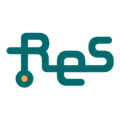General description of WEpods project
Robot Engineered Systems (RES) is developing self-driving shuttle buses called WEpods. In the last few years, we developed software for two WEpods. They are driving at Weeze airport in Germany and Wageningen University campus, in mixed traffic on public roads. Those WEpods are small, 6 person shuttles that drive at limited speed (max 25km/h). The fact that we have a permission to test and operate on public roads makes us quite unique in The Netherlands, the EU, and even worldwide. Currently, we are in the process of building our new, next generation autonomous shuttle bus, as part of the EU subsidized Interreg Automated Transport project. It will be equipped with several cameras, radars, and lidars to provide a clear perception of the world around us. The bus will have space for 16 persons and our goal is to make it drive autonomously up to 50km/h. This increase in speed from 25km/h to 50km/h requires improvements at practically all levels of our current hardware and software stack.
Robot Engineered Systems is part of Robot Robots Company and has two sister companies called Robot Care Systems and Robot Security Systems, respectively developing an elderly care robot and a security robot. Robot Robots Company is a young, fast growing scale-up company, with lots of interesting development projects going on. We all work in the same building, so you will be part of an inspiring and fun engineering team. We are located in Delft, close to the TU Delft and next to the busstop on the rotterdamseweg.
Project description: Object tracking using muliple models
For object tracking we make use of the Extended Kalman Filter (EKF). This filter uses a number of covariance matrices. One such matrix is specific for a sensor/data source, and the other matrix is specific to the model. However, these might not be correct, reducing the overall performance. Especially since the sensor covariance matrix is based on sensor data, which might not be completely accurate/valid. This requires further investigation and fine-tuning. Furthermore, Kalman Filters use a model. However, some specific models are not yet implemented. Moreover, in some situations, it is better to to use multiple models for different types of behavior, for example using Interactive Multi Model Filters (IMM). By switching these models appropriately, we can get better tracking results.
The goal of this internship is to implement more advanced motion models and optimize the Tracking module in its performance. The internship will be done using Ubuntu Linux and ROS (Robot Operating System) with C++ as the main programming language.
